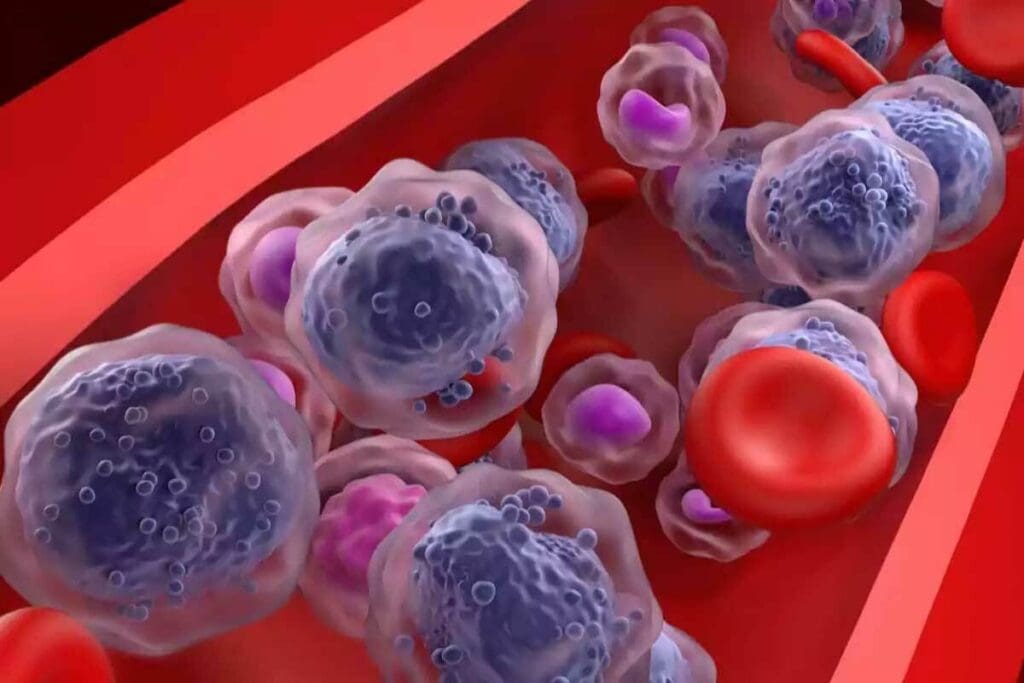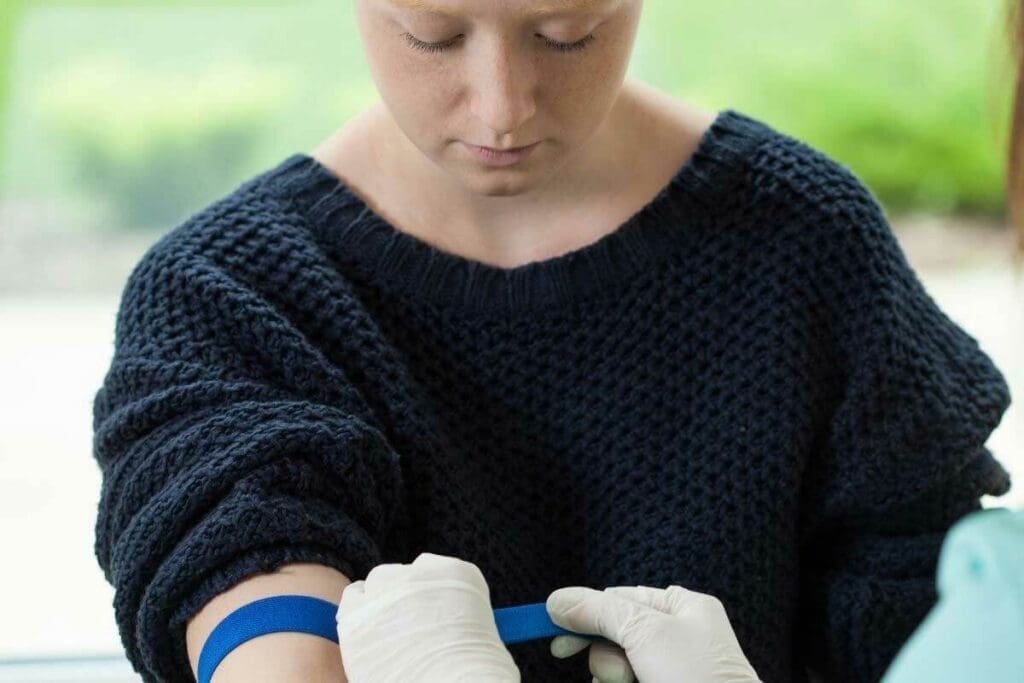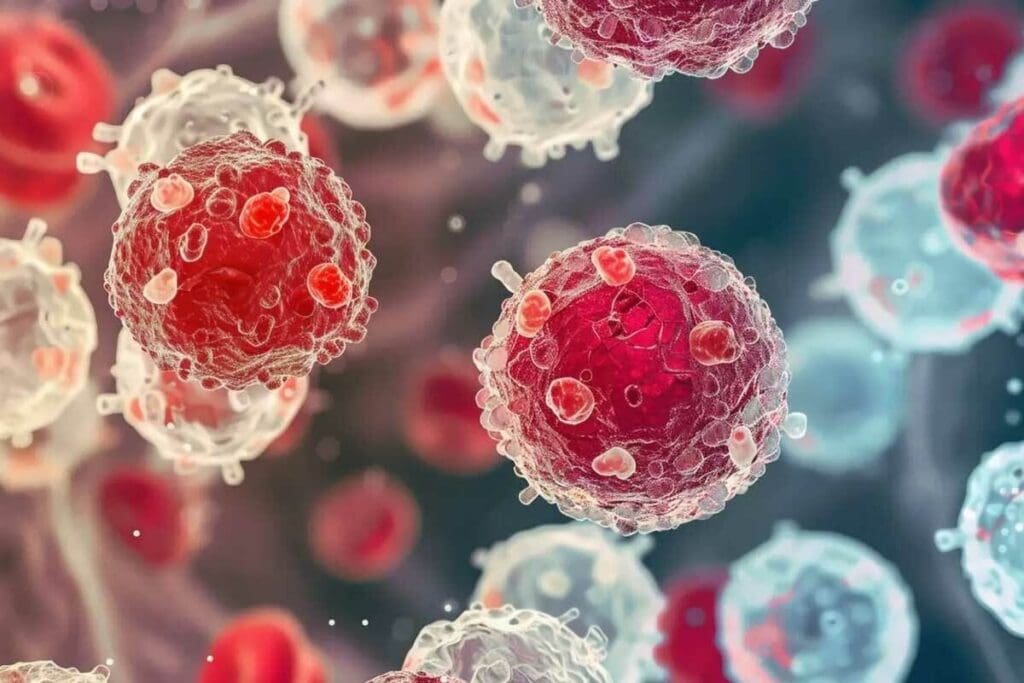Last Updated on November 20, 2025 by Ugurkan Demir

At Liv Hospital, we know leukemia is a big worry for teens. Acute lymphocytic leukemia (ALL) is the most common type. We aim to give top-notch care and support to teens and young adults with this disease.
If you’re a teen or young adult with leukemia, knowing the risks and symptoms is key. We’re here to offer detailed care and advice every step of the way.Discover leukemia in adolescents: symptoms, risks, and age-specific signs to monitor.

Leukemia in adolescents is a growing worry for doctors. It’s a blood and bone marrow cancer usually seen in kids. But, it’s also a big issue for teens and needs more attention.
Being diagnosed with leukemia in your teens can change your life a lot. It affects your school, friends, and how you feel. We’ll look into why leukemia in teens is special and check out the latest numbers and trends.
Leukemia in teens is different from what younger kids or adults face. The types, symptoms, and treatments vary by age. For example, Acute Lymphocytic Leukemia (ALL) is common in kids, but Acute Myeloid Leukemia (AML) is more common in adults. Yet, teens can get both, making it harder to diagnose and treat.
Teens have their own set of challenges with leukemia. These include:
Recent data shows that about one-fifth of new leukemia cases and 32% of deaths are in people aged 15 to 19. This age group is at high risk because leukemia peaks in early childhood and again in late teens.
Some important facts are:
It’s key to understand these numbers and trends to help teens with leukemia. By looking at the current situation, we can tackle the unique problems teens face. This way, we can improve their care and support.

Leukemia in teenagers comes in different forms. Some types are more common than others. We will look at the main types of leukemia in teens, their characteristics, and how often they occur.
Teenagers with leukemia usually have one of a few specific types. The most common are Acute Lymphocytic Leukemia (ALL) and Acute Myeloid Leukemia (AML). Chronic leukemia is less common in this age group.
ALL makes up about 75% of leukemia cases in children and teens. It’s caused by the fast growth of immature white blood cells. This can lead to health problems if not treated quickly. Symptoms include feeling very tired, looking pale, and getting sick often.
AML is another common leukemia in teenagers. It’s more common in adults but is also seen in teens. AML grows fast and is more aggressive than ALL. Treatment often involves strong chemotherapy.
While rare in teens, Chronic Lymphocytic Leukemia (CLL) and Chronic Myeloid Leukemia (CML) can happen in young adults. These types grow slower than acute ones. CLL affects lymphoid cells, and CML affects myeloid cells. Both need careful management.
Knowing how leukemia affects different ages is key to fighting it. This cancer of the blood and bone marrow hits people at all ages. But, how it shows up and its impact changes with age.
Studies show leukemia peaks twice: in young kids and again in teens and young adults. The biggest peak is in kids under 5. This is true for Acute Lymphocytic Leukemia (ALL), the top leukemia in kids.
The 15-19 age range is special because it’s a big change time. Even though leukemia is less common here than in young kids, it’s a big deal. It’s a time when symptoms might not be clear, making diagnosis harder.
Leukemia acts differently in kids and teens. ALL is common in both, but how often and how it’s treated varies. Teens are more likely to get Acute Myeloid Leukemia (AML) than younger kids. Here’s a quick look at the main differences.
| Characteristics | Childhood Leukemia (0-14 years) | Adolescent Leukemia (15-19 years) |
| Most Common Type | ALL (85-90%) | ALL (70-80%) |
| Incidence of AML | Lower (around 10-15%) | Higher (around 20-30%) |
| Survival Rates | Generally higher for ALL | Lower compared to younger children |
Knowing these differences helps doctors give better care for each age group. This could lead to better results.
Leukemia in teens often shows up with small symptoms that can be missed. It’s key to know these signs early. Early detection can really help with treatment.
Teenagers with leukemia might feel tired, bruise easily, or have pain in bones or joints. These signs of leukemia in teens can look like other teen health issues. So, it’s important for parents and doctors to watch closely.
Leukemia also shows up in other ways, affecting the whole body. It can cause fever, night sweats, and swollen lymph nodes. Spotting these leukemia symptoms in teens is key for quick medical checks.
If a teen has severe symptoms like heavy bleeding, trouble breathing, or severe pain, get help right away. Quick action can greatly improve their chances of beating leukemia.
| Symptom | Description | Action |
| Severe bleeding | Heavy or uncontrolled bleeding | Seek immediate medical attention |
| Severe pain | Persistent or severe bone or joint pain | Consult a healthcare provider |
| Frequent infections | Recurring infections or fever | Schedule a medical evaluation |
Knowing the signs of leukemia in teenager helps parents and caregivers act fast. If you worry about your teen’s health, talk to a doctor right away.
It’s important to know the risk factors for leukemia in teens. This helps us find it early and treat it well. Leukemia affects different groups in different ways, changing how we diagnose and treat it.
Studies show Hispanic teens get leukemia more often than non-Hispanic white teens. They are almost twice as likely to get acute lymphoblastic leukemia (ALL). ALL is the most common leukemia in teens.
Incidence Rate Comparison:
| Ethnic Group | Incidence Rate of ALL per 100,000 |
| Hispanic Adolescents | 4.2 |
| Non-Hispanic White Adolescents | 2.3 |
Socioeconomic factors greatly impact how long teens with leukemia live. Things like healthcare access, insurance, and family income matter a lot. They affect how quickly and well teens get treated.
Key Socioeconomic Factors:
Where a teen lives also affects their risk of getting leukemia. Environmental factors, genetics, and healthcare access vary by location. These differences lead to different leukemia rates.
Knowing about these risk factors helps us improve how we treat leukemia in teens. This way, we can help more teens get better.
Diagnosing leukemia in teens is tough because its symptoms are not clear. It’s hard to tell if it’s leukemia or another common illness in teens.
To diagnose leukemia, doctors use blood tests, bone marrow aspiration, and more. Blood tests first check for abnormal white blood cells. If they find something, a bone marrow aspiration is done to look at bone marrow cells.
Imaging tests like X-rays and CT scans check if leukemia has spread. Molecular and genetic testing help find the exact type of leukemia and plan treatment.
It’s hard to tell leukemia from other illnesses that look similar. Conditions like infectious mononucleosis and idiopathic thrombocytopenic purpura can be mistaken for leukemia. A detailed test is needed to get the right diagnosis.
Finding leukemia early is key for better treatment and survival. Early treatment can lower the risk of serious problems. It’s important to know the signs and see a doctor quickly if symptoms don’t go away.
The benefits of early detection are:
Understanding the challenges in diagnosing leukemia and the need for early detection helps improve outcomes for teens with this disease.
It’s key to know about treatment plans and survival rates for teen leukemia. This info helps patients, families, and doctors. Treating teen leukemia is now more complex, with many treatments and plans for each patient.
Leukemia treatment for teens has seen big improvements. New therapies aim to better results and fewer side effects. Studies show targeted and immunotherapies are being tested too.
Chemotherapy is a mainstay for most teen leukemia. Doctors tailor treatments based on the leukemia type and patient’s risk. For example, ALL treatment often includes strong chemotherapy, while AML might need even more aggressive treatments.
Thanks to better treatments and care, survival rates for teen leukemia have gone up. Survival rates differ based on leukemia type and age.
| Leukemia Type | Age Group | 5-Year Survival Rate |
| ALL | 15-19 years | 85% |
| AML | 15-19 years | 60% |
As more teens survive leukemia, looking after their long-term health is vital. Survivors face risks like heart problems, second cancers, and hormone issues. It’s important to have ongoing care to watch for and manage these issues.
Survivors need doctors who know about late effects. They should also live healthy lives. This means regular check-ups, screenings, and learning about healthy habits.
Teenagers with leukemia face special challenges that affect their education, social life, and identity. Getting leukemia during their teenage years can change their life path. This is a critical time for growth and development.
One big challenge for teens with leukemia is keeping up with school. Treatment can mean missing classes, affecting grades and social life.
Healthcare and schools team up to help. They offer home learning, online classes, and programs to ease back into school.
Leukemia treatment can change how teens see themselves. Losing hair, gaining or losing weight, and other changes can hurt their self-esteem. It’s key for doctors to talk about these issues and offer support.
There are many resources for teens with leukemia and their families. These include:
Having a strong support system is vital for teens with leukemia. It helps them and their families deal with the emotional and social impacts. By giving access to these resources, we support young patients and their families during treatment.
| Support Resource | Description | Benefit |
| Counseling Services | Professional guidance for emotional and psychological challenges | Improved mental health and coping strategies |
| Support Groups | Community for sharing experiences and connecting with others | Reduced feelings of isolation, shared understanding |
| Online Resources | Information and forums for patients and families | Accessible information, community connection |
Leukemia in adolescents is complex, but we can make a difference. New treatments have greatly improved their chances of recovery. This shows how important it is to keep working on better care.
Early detection and modern treatments are key. They help improve the lives of young patients. Understanding their challenges helps us give them the best care possible.
Healthcare professionals and researchers are dedicated to finding new ways to fight leukemia. Their hard work means we can offer top-notch care to patients from around the world.
Our work to improve care gives hope to teens with leukemia and their families. By supporting them and using the latest medical breakthroughs, we can help them live better lives.
Acute Lymphocytic Leukemia (ALL) is the most common leukemia in teens. It makes up a big part of cases in this age group.
Leukemia can happen at any age. But, the peak ages differ by type. ALL hits kids and teens the most. AML and chronic types rise with age, after 40.
Symptoms include feeling very tired, pale skin, and getting sick often. You might also bruise easily, have swollen lymph nodes, or pain in bones or joints. Other signs are fever, losing weight, and not wanting to eat.
Doctors use blood tests, bone marrow biopsies, and imaging to diagnose leukemia. Finding it early is key for good treatment.
Treatments depend on the leukemia type and how severe it is. They often include chemotherapy, targeted therapy, and sometimes bone marrow transplants. Thanks to new treatments, more teens are surviving.
Yes, some groups are at higher risk. For example, Hispanic teens have a higher chance of getting ALL. Poorer families might also face tougher survival odds.
Leukemia can really affect a teen’s school, social life, and sense of self. They face challenges like dealing with treatment side effects, keeping friends, and feeling okay about their body.
There are many resources out there. These include counseling, support groups, and educational programs. They help teens and their families deal with leukemia’s challenges.
Yes, with today’s treatments, many teens can get better and even be cured. This is true for most ALL cases. But, survival chances depend on the leukemia type and other factors.
Survivors might face health problems later on. These include higher risks of other cancers, heart disease, and more. It’s important for them to keep seeing doctors to watch for these risks.
Subscribe to our e-newsletter to stay informed about the latest innovations in the world of health and exclusive offers!